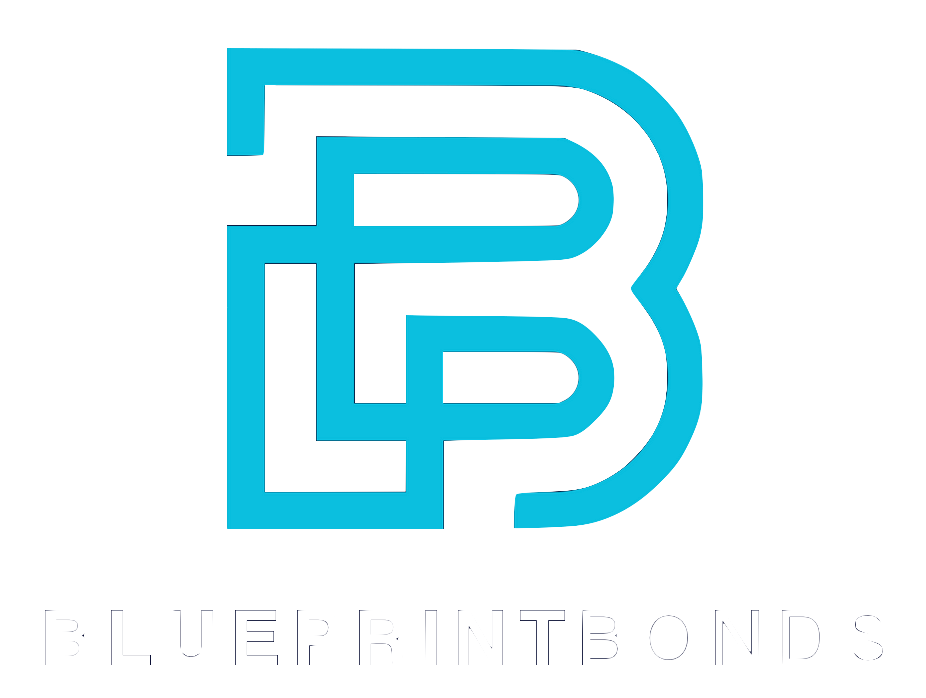The Wage and Welfare Bond is a critical instrument in the realm of labor relations and employee compensation. Understanding its intricacies can empower both employers and employees to navigate the complexities of wage security and welfare benefits. This article delves into the various aspects of the Wage and Welfare Bond, providing essential insights that can aid in making informed decisions.
What is a Wage and Welfare Bond?
A Wage and Welfare Bond is a type of surety bond that ensures employers fulfill their obligations related to employee wages and welfare benefits. It serves as a financial guarantee that employees will receive their entitled compensation and benefits, even if the employer encounters financial difficulties or fails to meet their obligations.
These bonds are particularly significant in industries where wage theft or non-compliance with labor laws is prevalent. By securing a Wage and Welfare Bond, employers can demonstrate their commitment to fair labor practices, while also providing employees with a safety net that protects their rights. This assurance can be crucial for workers in sectors such as construction, hospitality, and healthcare, where the risk of wage disputes can be higher due to the nature of the work and the complexity of labor regulations.
Purpose of Wage and Welfare Bonds
The primary purpose of a Wage and Welfare Bond is to protect employees. In the event that an employer defaults on wage payments or fails to provide promised benefits, the bond can be used to compensate affected employees. This ensures that workers are not left vulnerable in situations where employers may not fulfill their financial responsibilities. The bond acts as a financial safety net, allowing employees to seek recourse without the fear of losing their livelihoods while pursuing claims against their employers.
Additionally, these bonds help to foster trust between employers and employees. By securing a bond, employers signal their dedication to ethical practices, which can enhance their reputation and attract talent. This is particularly important in competitive job markets, where potential employees are increasingly prioritizing companies that demonstrate a commitment to fair treatment and welfare. Moreover, the presence of a Wage and Welfare Bond can also serve as a deterrent against potential violations of labor laws, as employers are more likely to adhere to regulations when they have a financial obligation to uphold. This not only benefits employees but also contributes to a more stable and equitable work environment, promoting overall industry integrity.

Who Needs a Wage and Welfare Bond?
Wage and Welfare Bonds are typically required for businesses in certain industries, particularly those that are heavily regulated or have a history of labor disputes. Construction, hospitality, and healthcare sectors often fall under this category. However, any business that employs workers and is subject to wage and labor laws may benefit from obtaining a bond. These bonds serve as a financial guarantee that employers will adhere to labor laws and fulfill their obligations to their employees, thereby fostering a fair working environment.
Employers who engage in contracts with government agencies or public entities are frequently mandated to secure Wage and Welfare Bonds. This requirement is designed to protect public funds and ensure that taxpayer dollars are not used to subsidize wage theft or inadequate employee benefits. By requiring these bonds, government entities can help maintain a level playing field for all businesses while also safeguarding the rights of workers. This not only promotes ethical business practices but also enhances the overall reputation of the industry.
Types of Employers That May Require Bonds
1. **Construction Companies**: Often required to secure bonds to ensure that subcontractors and workers are paid appropriately, especially on public projects. This is particularly crucial in large-scale construction endeavors where multiple subcontractors are involved, as it helps to mitigate the risk of non-payment and ensures that all laborers receive their due compensation.
2. **Service Providers**: Businesses in sectors like hospitality and healthcare may also need to secure bonds to protect their employees’ wages and benefits. For instance, in the hospitality industry, where tips and variable wages are common, a Wage and Welfare Bond can ensure that employees receive their guaranteed minimum wage and any additional benefits promised by their employers, thus fostering a more stable workforce.
3. **Government Contractors**: Any business that enters into contracts with government entities is typically required to obtain a Wage and Welfare Bond as part of the bidding process. This requirement not only protects the workers but also ensures that the contractors are financially responsible and capable of meeting their wage obligations. Furthermore, it acts as a deterrent against potential wage disputes, as the bond can be claimed against in the event of non-compliance, providing a layer of security for both employees and the contracting agency.
How to Obtain a Wage and Welfare Bond
Obtaining a Wage and Welfare Bond involves several steps, which can vary depending on the state and the specific requirements of the bond. Generally, the process includes assessing the bond amount, providing necessary documentation, and working with a surety bond provider.
Before applying, it's crucial for employers to conduct a thorough assessment of their financial standing and compliance with labor laws. This can help in determining the bond amount required and streamline the application process. Understanding local labor regulations is essential, as different states may have unique requirements regarding wage and welfare bonds. Employers should familiarize themselves with these regulations to avoid potential pitfalls that could delay the bonding process.
Steps to Secure a Bond
1. **Assess Your Needs**: Determine the amount of coverage required based on the number of employees and the average wages paid. This assessment not only helps in calculating the bond amount but also ensures that the bond will adequately cover potential claims related to unpaid wages or benefits.
2. **Gather Documentation**: Prepare financial statements, tax returns, and any other relevant documentation that may be required by the surety provider. This documentation serves as proof of the employer's financial stability and ability to meet obligations, which can significantly influence the approval process.
3. **Choose a Surety Provider**: Research and select a reputable surety bond company that specializes in Wage and Welfare Bonds. Look for providers with positive reviews and a strong track record in the industry, as this can impact the level of service and support you receive throughout the bonding process.
4. **Complete the Application**: Fill out the application form provided by the surety company, providing all necessary information and documentation. Be thorough and accurate in your responses, as discrepancies can lead to delays or even denial of the bond.
5. **Pay the Premium**: Once approved, pay the bond premium to secure the bond, which is typically a percentage of the total bond amount. It's important to understand that this premium is a cost of doing business and can vary based on factors such as creditworthiness and the overall risk assessment by the surety company.
6. **Maintain Compliance**: After obtaining the bond, employers must remain vigilant in maintaining compliance with all relevant labor laws and regulations. Regular audits and reviews of payroll practices can help ensure that the business continues to meet its obligations, thereby reducing the risk of claims against the bond.
7. **Renewal and Updates**: Wage and Welfare Bonds often require periodic renewal. Employers should stay informed about renewal dates and any changes in regulations that might affect the bond amount or terms. Additionally, if there are significant changes in the business, such as an increase in employee count or wage structure, it may necessitate an adjustment to the bond amount.
Cost of Wage and Welfare Bonds
The cost of a Wage and Welfare Bond can vary significantly based on several factors, including the bond amount, the employer's creditworthiness, and the specific requirements of the surety provider. Typically, the premium for these bonds ranges from 1% to 15% of the total bond amount. This variability means that employers must carefully consider their financial situation and the potential risks involved when applying for a bond.
Employers with strong credit histories and solid financial standing may qualify for lower premiums, while those with poor credit may face higher rates. It's essential for employers to shop around and compare rates from different surety companies to find the best deal. Additionally, some surety providers may offer discounts for bundling multiple bonds or for long-term clients, which can further reduce overall costs.
Factors Influencing Bond Costs
1. **Credit Score**: A higher credit score usually results in lower premiums, as it indicates a lower risk to the surety company. This means that maintaining good credit practices, such as timely payments and responsible borrowing, can lead to significant savings over time.
2. **Business History**: Established businesses with a track record of compliance with labor laws may receive more favorable rates. A clean compliance record not only helps in securing better bond rates but also enhances the company's reputation in the industry, potentially attracting more clients and partnerships.
3. **Bond Amount**: The total amount of the bond required will directly influence the premium; higher bonds typically result in higher costs. It's important for employers to assess their specific needs and the legal requirements in their jurisdiction, as this will dictate the bond amount necessary for compliance. Understanding these nuances can help businesses make informed decisions about their bonding needs and financial planning.
4. **Industry Type**: Different industries may have varying requirements and risks associated with Wage and Welfare Bonds. For instance, construction companies often face stricter regulations and higher scrutiny, which can lead to increased bond costs. On the other hand, businesses in less regulated sectors may find that their bond premiums are more manageable. Employers should be aware of the specific regulations that apply to their industry to better anticipate potential costs.
5. **Claims History**: If a business has a history of claims against its bonds, this can negatively impact future premium rates. Surety companies assess the risk of issuing a bond based on past behavior, so maintaining a clean claims history is crucial. Employers should implement robust risk management practices to minimize the likelihood of claims, thereby supporting their bond application process.

Benefits of Wage and Welfare Bonds
Wage and Welfare Bonds offer numerous benefits to both employers and employees. For employers, securing a bond can enhance their reputation and demonstrate a commitment to ethical business practices. For employees, these bonds provide a safety net that ensures their rights are protected, fostering a more secure work environment.
Additionally, having a Wage and Welfare Bond can help businesses win contracts, particularly with government agencies that require proof of financial responsibility. This can open doors to new opportunities and contribute to business growth. In an increasingly competitive market, companies that prioritize compliance and ethical standards often find themselves at an advantage, attracting not only clients but also top-tier talent who value a trustworthy employer.
Advantages for Employers
1. **Enhanced Credibility**: A bond can improve a company's reputation, making it more attractive to potential employees and clients. This credibility can be pivotal in industries where trust and reliability are paramount, such as construction and healthcare.
2. **Access to Contracts**: Many government contracts require a Wage and Welfare Bond, allowing businesses to compete for lucrative projects. This requirement ensures that only financially responsible companies are considered, thus elevating the overall quality of service provided to the public.
3. **Risk Mitigation**: By securing a bond, employers can mitigate the risk of financial losses associated with wage disputes and non-compliance with labor laws. This proactive approach not only protects the company’s bottom line but also fosters a culture of accountability and transparency within the organization.
Advantages for Employees
1. **Financial Security**: Employees can feel more secure knowing that their wages and benefits are protected by a bond. This assurance can lead to increased job satisfaction and loyalty, as workers are less likely to worry about potential financial instability.
2. **Legal Recourse**: In the event of a wage dispute, employees can file claims against the bond, providing a pathway to recover unpaid wages. This legal safeguard empowers workers, ensuring they have a voice and a means to address grievances without fear of retaliation.
3. **Improved Working Conditions**: The presence of a Wage and Welfare Bond encourages employers to adhere to labor laws and maintain fair treatment of employees. Furthermore, it can lead to a more positive workplace culture, where employees feel valued and respected, ultimately enhancing productivity and morale. The bond acts as a reminder for employers to prioritize the well-being of their workforce, creating an environment that champions fairness and equity.
Legal Considerations
Understanding the legal framework surrounding Wage and Welfare Bonds is crucial for both employers and employees. Various laws and regulations govern the issuance and enforcement of these bonds, and compliance is essential to avoid legal repercussions.
Employers must ensure that they meet all requirements set forth by state and federal laws regarding wage payments and employee benefits. Failure to comply can result in penalties, including the forfeiture of the bond and legal action from employees.
Key Legal Regulations
1. **Fair Labor Standards Act (FLSA)**: This federal law establishes minimum wage and overtime pay standards, which employers must adhere to when securing a bond.
2. **State Labor Laws**: Each state has its own labor laws that may impose additional requirements on employers regarding wage payments and employee benefits.
3. **Contractual Obligations**: Employers must also consider any contractual obligations they have with employees or unions, which may impact the terms of the bond.
Common Misconceptions About Wage and Welfare Bonds
There are several misconceptions surrounding Wage and Welfare Bonds that can lead to confusion among employers and employees. Clarifying these myths can help stakeholders better understand the purpose and function of these bonds.
Myth vs. Reality
1. **Myth**: Wage and Welfare Bonds are only necessary for large corporations.
**Reality**: Any business that employs workers, regardless of size, can benefit from securing a bond to protect employee wages and benefits.
2. **Myth**: Bonds are only for government contractors.
**Reality**: While many government contracts require bonds, private employers can also choose to secure them to demonstrate commitment to fair labor practices.
3. **Myth**: Obtaining a bond is too complicated and expensive.
**Reality**: While there are costs involved, the process can be straightforward, and the benefits often outweigh the expenses.
Conclusion
The Wage and Welfare Bond is an essential tool for ensuring that employees receive the wages and benefits they are entitled to. By understanding the purpose, requirements, and benefits of these bonds, both employers and employees can navigate the complexities of labor relations more effectively.
As labor laws continue to evolve, securing a Wage and Welfare Bond can serve as a proactive measure for employers to protect themselves and their employees. This not only fosters a fair work environment but also enhances the overall reputation of the business within the community.
In an ever-changing labor landscape, staying informed about Wage and Welfare Bonds is crucial for anyone involved in the workforce. Whether you are an employer looking to secure your business or an employee wanting to understand your rights, knowledge is power.
Article By: Ryan Spalding
Licensed Insurance Agent & Bond Specialist
Contact Us

